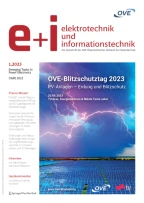References
Papp K, Sharp MS, Peelo DF (2014) High voltage dry-type air-core shunt reactors. Cigre, Paris, pp A3–A101
International Commission on non-ionizing Radiation Protection—ICNIRP: (2010) Guidelines for limiting exposure to time-varying electric and magnetic fields (1 Hz–100 kHz). Health Phys 99(6):818–836
Smythe WR (1968) Static and dynamic electricity. McGraw-Hill,
IEC TS 62073 (2016) Guidance on the measurement of hydrophobicity of insulator surfaces
IEEE C39.019 (1963) Safety requirements for standard for low-voltage AC power circuit breakers and Switchgear assemblies. The Institute of Electrical and Electronics Engineers, New York, USA
Basha FK, Thompson M, - Practical EHV reactor protection. IEEE Xplore. https://ieeexplore.ieee.org/document/6822055
CONSEIL INTERNATIONAL DES GRANDS RÉSEAUX ÉLECTRIQUES. COMITÉ D’ÉTUDES B5 (2012) Protection, monitoring and control of shunt reactors. In: Cigré, Paris
IEEE (2007) C37.109 guide for the protection of shunt reactors. The Institute of Electrical and Electronics Engineers, New York, USA
Cigre WG A2.37 (2015) Transformer reliability survey
DWIGHT HB (1945) Electrical coils and conductors: their electrical characteristics and theory, 1st edn. University Microfilms International, London, p 351
GROVER FW (2009) Inductance calculations: working formulas and tables. Dover Publications, Mineola, NY
Dopplmair P, Venediger P, Pointner K (2022) Evaluation and implementation of HV dry-type shunt reactors into a 420 kV transmission grid. Cigre, Paris, pp A2–A810
Author information
Authors and Affiliations
Corresponding author
Additional information
Publisher’s Note
Springer Nature remains neutral with regard to jurisdictional claims in published maps and institutional affiliations.
Paper submitted for the CIGRE Session 2024, SC-A3, August 25–30, 2024
Rights and permissions
About this article
Cite this article
Bhardwaj, N., Dopplmair, P. Important aspects of HV dry type shunt reactors in comparison with oil-immersed shunt reactors. Elektrotech. Inftech. 141, 701–709 (2024). https://doi.org/10.1007/s00502-024-01285-y
Accepted:
Published:
Issue Date:
DOI: https://doi.org/10.1007/s00502-024-01285-y
